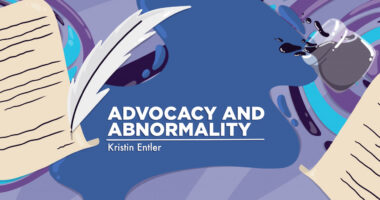Positive reinforcement goes a long way at a clinic visit
How to make in-person appointments more inviting for patients

The University of Alabama hospital wing that houses my cystic fibrosis (CF) clinic always reminds me of an airport. The main hallway has signs overhead that direct everyone toward different “terminals,” and by 10 a.m., the place is always swarming with people.
Patients have myriad chronic illnesses, some apparent, and others invisible, like mine. We shuffle, walk, and wheel through this same stretch of hospital, getting bottlenecked in this liminal space between our vehicles and our clinics. Doctors, nurses, and other hospital staff pass through and retreat to their designated corners of this five-story building dedicated entirely to outpatient care.
All the walls are painted a color I imagine could be named “liminal-space tan.” It’s so bland that, instead of providing a sense of neutrality, it almost seems to amplify the crowdedness, the antiseptic smell, and the too-bright fluorescent lights.
While I’m sitting in the open-concept pulmonology waiting area, with the endocrine and cardiology ones visible nearby, it’s hard not to think about ways the whole experience could be improved.
The value of positive reinforcement
I think about my friend who recently started seeing a new primary care provider (PCP). Their office has a sign offering accommodations, such as turning off the overhead lights in the exam room to reduce sensory overload. Most surprising for my friend and me was that, upon leaving their appointment, they got to pick an item out of a box of goodies.
It reminded me of being an inpatient at the local children’s hospital to receive IV antibiotics; volunteers would drop off donated stuffed animals as a sort of consolation prize. My friend’s PCP offered simple parting objects: pens, notebooks, stickers, and the like. But sometimes, the little rewards make the biggest difference. This is particularly true in healthcare settings, where small acts help us feel seen as people, not just as a patient record number on a hospital bracelet.
In psychology, positive reinforcement involves using a high-value reward to encourage repetition of a behavior, like offering a dog a treat when it sits on command. I think it would be a brilliant idea for doctors’ offices and clinics to implement positive reinforcement systems and to consider the value of receiving a little treat for completing a task.
Clinic appointments are hard, especially for people with chronic illnesses and medical trauma. In fact, they’re so challenging that I try to avoid them in person, preferring telehealth appointments whenever possible. But my clinic insists I visit in person every so often.
When I factor in the increased risk of exposure to things like the flu and COVID-19, which could have potentially devastating and life-threatening consequences for me, it’s an overwhelming experience. The last time I visited my CF clinic in person back in the spring, I had a full-blown panic attack and couldn’t ground myself in the present until I was back in my car.
I don’t think a sticker would’ve stopped me from having a panic attack, but at least I’d have something to put on my computer. Grabbing a fidget toy and some stickers as I walk out the door would go a long way in encouraging me the next time I have to return to the clinic.
Note: Cystic Fibrosis News Today is strictly a news and information website about the disease. It does not provide medical advice, diagnosis, or treatment. This content is not intended to be a substitute for professional medical advice, diagnosis, or treatment. Always seek the advice of your physician or other qualified health provider with any questions you may have regarding a medical condition. Never disregard professional medical advice or delay in seeking it because of something you have read on this website. The opinions expressed in this column are not those of Cystic Fibrosis News Today or its parent company, Bionews, and are intended to spark discussion about issues pertaining to cystic fibrosis.









Leave a comment
Fill in the required fields to post. Your email address will not be published.